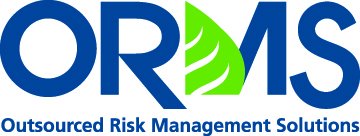Managing Lender’s Risk with Environmental Insurance
SBA Rolls Out Environmental Guidance Changes
March 20, 2019A Phase I Cautionary Tale
May 30, 2019Managing Lender’s Risk with Environmental Insurance
Commercial lending is a business fundamentally based on managing risk. Certain risks are well-understood, such as credit risk, interest rate risk, collateral risk, and concentration risk. But others may not be so obvious. The environmental risks associated with commercial real estate (CRE) lending may seem small, but they have the potential to cause enormous headaches.
For example, under the federal Comprehensive Environmental Response, Compensation, and Liability Act (CERCLA), a party that owns or operates a facility can be held directly responsible for cleaning up hazardous waste, whether the party contributed to the underlying contamination or not.
Fortunately, in 1996 the government passed a safe harbor for lenders (the Secured Creditor Exemption, or SCE). However, it requires the lender to 1) not participate in the management of the facility prior to foreclosure, and 2) dispose of the facility at the “earliest practicable, commercial reasonable time, on commercially reasonable terms,” following foreclosure.
This is not a minor concern. According to a 2011 study done by the EPA, the costs of contaminated land cleanup range from $0 to $52 million, with a median expense of $338,000. In many cases, the cost of cleanup may be much higher than the balance of your loan, or the property’s value itself!
Protect Against Environmental Risk with Lender’s Insurance
Since the SCE does not fully protect lenders from all possible environmental risks under all scenarios, you should investigate other options for minimizing the risk associated with costly environmental cleanup and liability claims.
One approach would be to require your borrower or guarantor to provide indemnification against all future claims. Another is to demand funds to be held in escrow to cover the potential costs of any future environmental claims.
But, given the uncertainties involved, the best hedge may be to purchase an insurance policy as additional protection against any potential environmental risks on your mortgaged properties.
Various lines of coverage are available in the market, depending on your institution’s needs. Coverage types include: pollution legal liability insurance, which protects against liability from damage caused by hazardous materials; contractors liability insurance; and cost cap insurance to protect against catastrophic site cleanup costs.
For example, Beazley, a boutique insurance agency, recently introduced an environmental product that, according to its website “provides comprehensive coverage developed to help you mitigate damages and loss resulting from claims for bodily injury, property damage, cleanup and the destruction of natural resources due to pollution conditions on, at, under or migrating from a covered location.”
Environmental insurance provides several important benefits, including:
- Protection against cost of cleanup: If the loan defaults or your institution is forced to foreclose on the property, and environmental contamination is discovered, the policy will cover the cost of clean-up (or the current balance of the loan, whichever is lower).
- Third-party liability protection: Depending on the type of coverage purchased, it may cover any future third-party environmental liability claims against the property.
- No cost to the lender: The cost of coverage is typically passed along to the borrower as a fee at closing.
- Faster time to close: In some cases, with coverage in place there is no need to obtain a Phase I environmental site assessment (ESA) prior to closing. This will speed up the closing process and save the borrower some expense (the cost of a Phase I ranges between $2,000 – 3,000, and may be even higher).
The Bottom Line on Environmental Risk Insurance:
Making lender environmental risk insurance a standard part of your CRE lending program may help mitigate potential environmental issues in the case of default or foreclosure. It can also help speed up time to close, enhance your overall commercial lending process, and reduce your borrower’s closing costs.
Of course, establishing clear, detailed risk management policies and procedures, following all applicable commercial lending environmental regulations and standards, and maintaining regular engagement with a well-qualified, experienced environmental risk management consultant are the most important components of a comprehensive commercial lending risk management program. By focusing on the fundamentals of risk management, there’s a good chance you’ll never need to file a claim.
